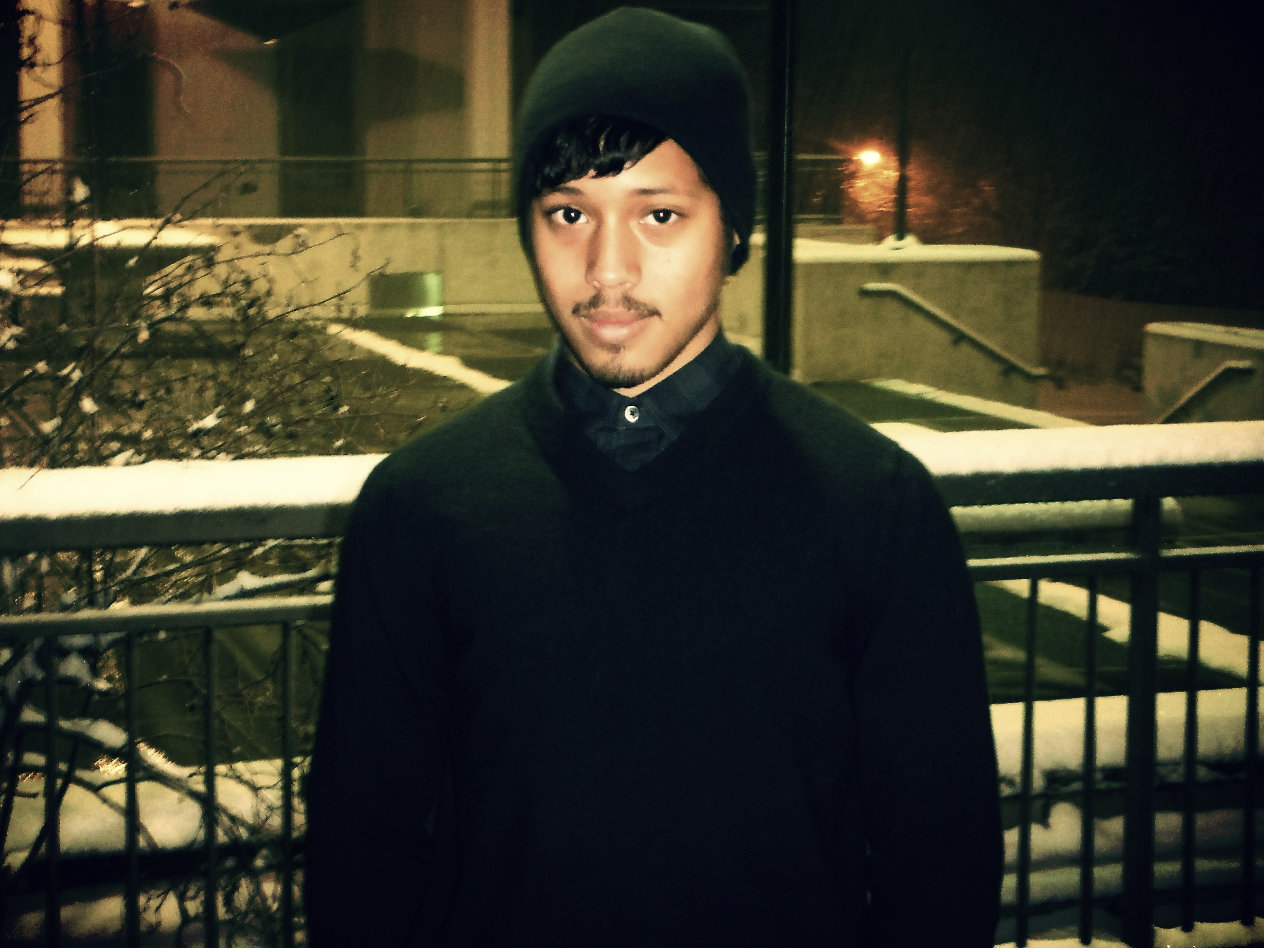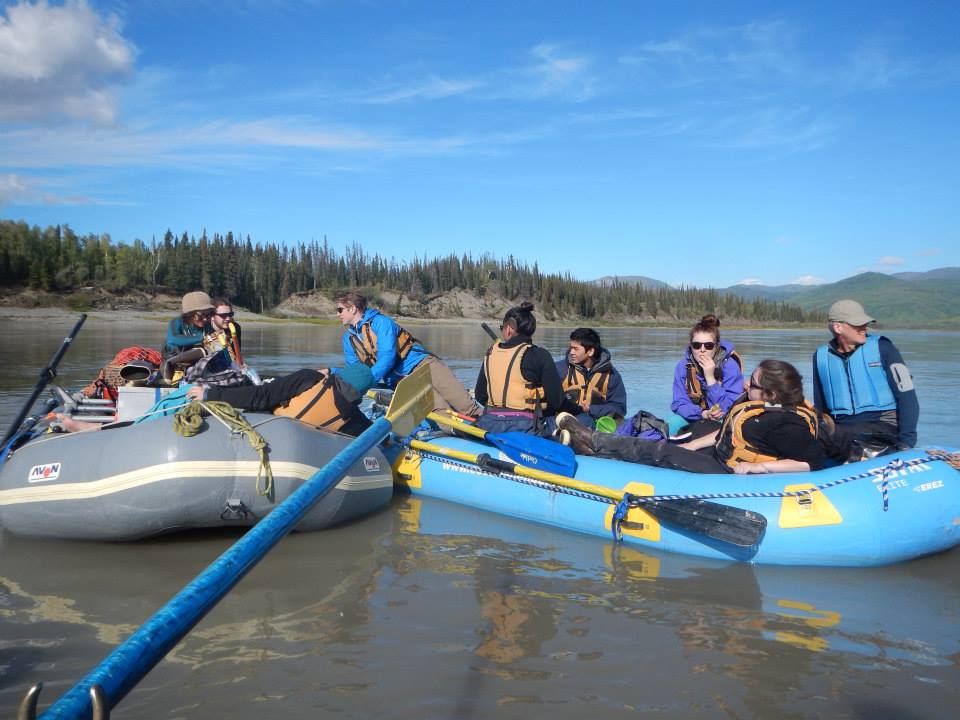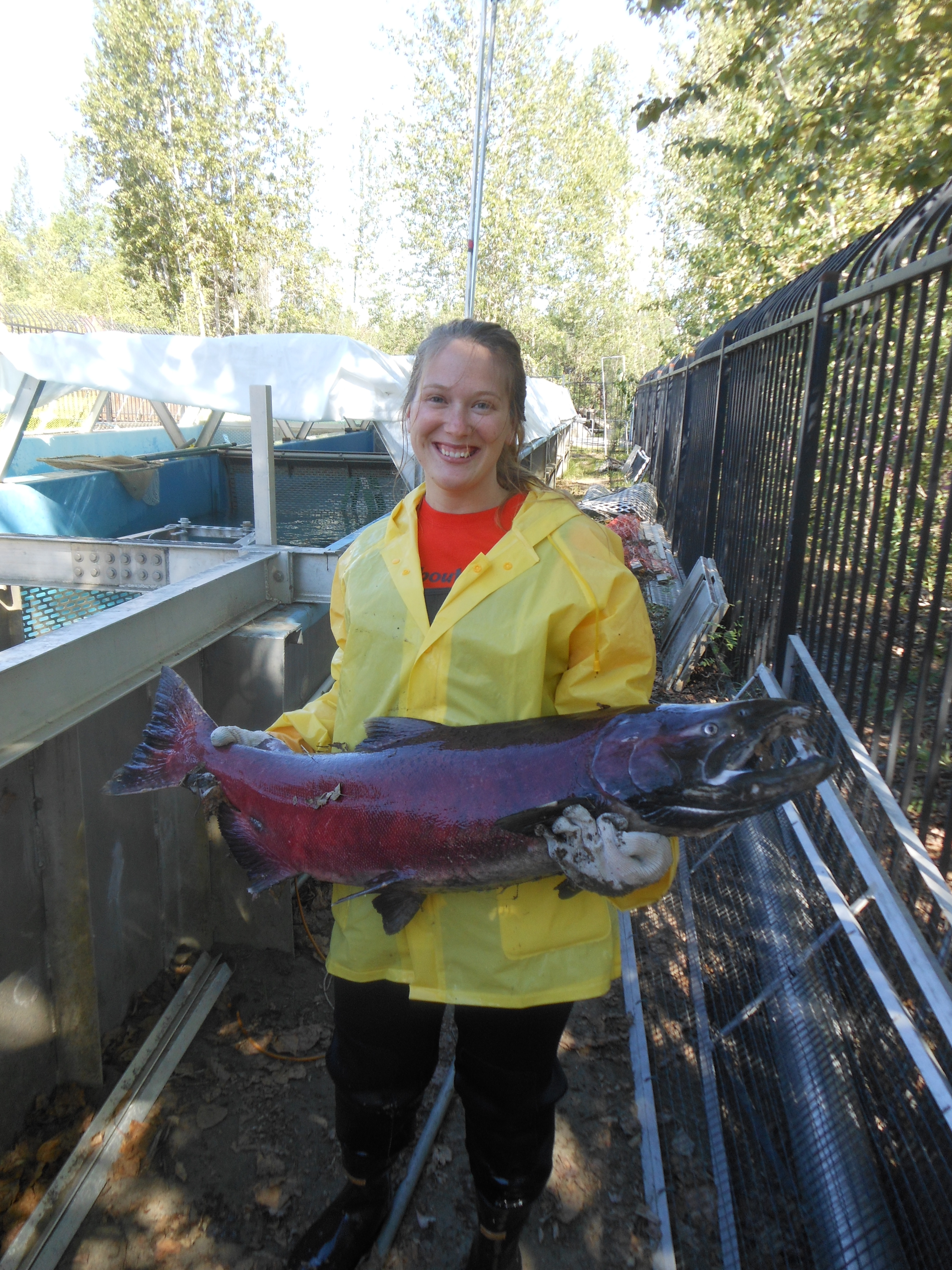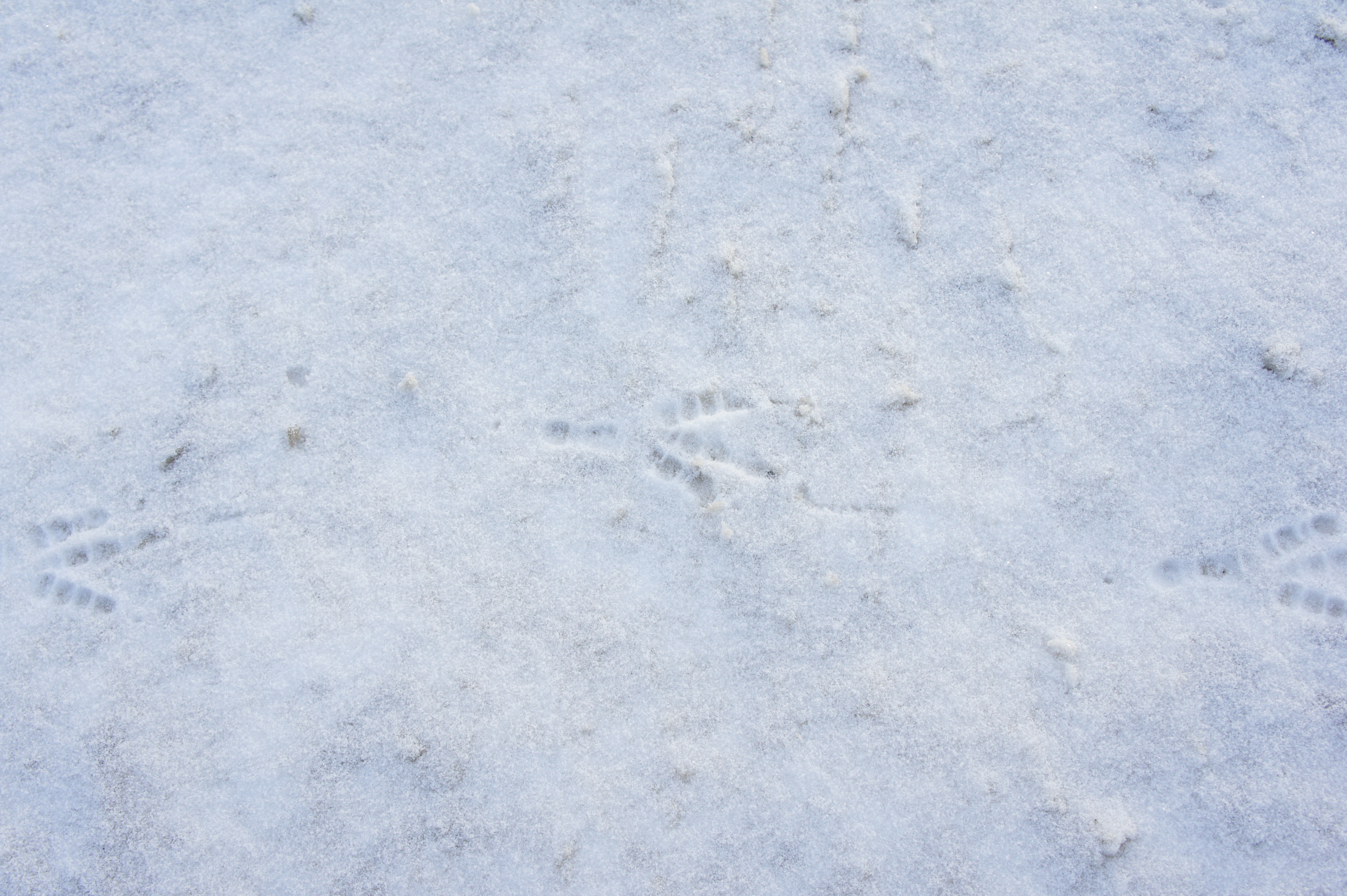[divider]
Approximately 16 miles north of Alaska Pacific University, Eagle River is located, aside Chugach State Park and Joint Base Elmendorf-Richardson (JBER). On May 24, 2013, Assistant Professor of Environmental Science, Casey Saenger, began his excursion. Dr. Saenger, who has taught both physics and algebra at APU since September 26th, is as new to Alaska Pacific University as the cohort ’17 freshmen. A Bates College graduate, Casey continued his studies at Yale, and even taught at the University of Alaska Anchorage prior to joining APU’s family. Dr. Saenger has a prestigious collection of accolades and publications, but they were likely the last things on his mind on that near-fatal Friday afternoon.
The objective was simple: Saenger, his wife, and a friend, each bringing their own pack rafts, intended to hike upstream of Eagle River, get on the water, and float back down. In those words, the endeavor almost sounds graceful, relaxing even, but certainly not dangerous. “I’ve done some whitewater stuff, but I wouldn’t classify myself anywhere near being an expert,” a modest Casey explained.
“The way Eagle River works: a lot of it is pretty mellow. You don’t have to have any crazy boating skills. It seemed like a good place to start.”
Even so, there is always a risk that is taken once you get on water. As the group of three began their ten-mile walk upstream, Casey carried with him the knowledge of river sections that were to be strictly avoided. They all felt comfortable afloat, digesting the 49th state’s beautiful scenery, but a menacing force waited impatiently ahead. Dr. Saenger recalls his thought, “How tough can this next bit be?” Then, it began.
“Coming down, you get this horizon where there’s a big change in the stream gradient. Essentially, the stream punches through an old moraine from an old glacier, so it goes from flowing pretty flatly to flowing pretty steeply. You see this horizon; you can’t tell what’s on the other side… You see bits of whitewater flopping up. Somehow, I got put in lead.
In a matter of seconds, the water went from a mellow state to one of great ferocity. A levelheaded Saenger considered that the impending events might not go well, but he felt committed. “Let’s see what happens,” he thought. Almost immediately, nature provided an answer, and Casey knew it would only be a matter of time before the river capsized his raft. In less than ten seconds, his theory was certified. In retrospect, Dr. Saenger asserts that “It was stupid not to have looked at that bit of river and known what I was in for,” but in the midst of the river’s violence, he recalls different thoughts.
“I remember sitting there, getting tossed and turned… at the mercy of the river. I thought I could hang out and keep my feet from getting caught, but you can only do that to some degree. I thought I would get spat out at the bottom, after a little bit, but it kept going and going, and going.”
The glacial water of an Alaskan spring is certainly nothing to scoff at, but Dr. Saenger hadn’t lost his senses yet. “I remember having a conscious thought of, this is getting kind of unpleasant. I really don’t want to continue do this.” Most people would share in his sentiment. As each drop kept Casey underwater for longer periods of time than the last, a plan became necessary. He decided that his survival depended on action, and it needed to be immediate. Fortunately, water-based sports are no stranger to Casey, who has been swimming since he was ten years old, and swam competitively during his college career. Still, the difference between swimming in wet, encumbering cloths, as opposed to appropriate gear, was dramatic.
“You don’t swim like you would if you were wearing trunks. You expend a bunch of energy. I started to swim towards shore. It was disconcerting. There were little eddies where the current slows down on the shore and circles back the other way.”
Eventually, in spite of the river’s power, a weakened and exhausted Casey made it to shore. It was there that the real horror began.
“I escaped relatively unscathed, so I felt good about that, but I felt bad for having put the other two people in that situation. I was looking upstream, waiting to see them coming down, and I wasn’t seeing them. In that unknown moment, it’s easy to assume the worst, to think that they’re trapped somewhere. It was only at that point, once I got myself to safety, where I got most scared.”
For five of what could have been some of the longest minutes of his life, Casey stood on the bank waiting, searching: hoping. It was then that his wife and friend appeared. They had been able to maneuver out of the trajectory before falling into Casey’s mistake. They saw him flip over, so they were well aware of the danger ahead.
“Once I saw them, I got all emotional and cried, and knew everything was okay. I was then on the other side of the river, and still had to get back across the river in order to get to where my car was. I had to walk a mile downstream to where it finally mellowed out. Moving kept me warm, but I had to get back into the river and swim back across. It was a little tough to build up the motivation to jump back in to the cold water, but it was necessary.”
Casey’s raft and backpack, which included his wallet and cellphone, snagged onto a tree. Having only lost his paddle, a changed Dr. Saenger considers himself to be truly lucky, and he is. It is far too great a benison that he is able to share this story with the Turnagain Currents and not a local newspaper’s obituary. Danger comes in many forms, whether it is a river or something much more abstract. The next tale is one of unexplainable content: a mystery, if you would. Though the life of the subject was never believed to be threatened, the intention of unearthly beings, if such things exist, will always be unknown to us.
“I can’t classify it as paranormal, because there may have been a logical explanation that I just couldn’t find,” said Stephanie Morgan, reasonably unwilling to commit to an absolute idea. A Portland State University graduate, Morgan currently teaches statistics and research methods in both APU’s business department and its psychology department. She has been a part of the community since the start of January, in 2009; in two months, she will have made it to her fifth year, and though her future is bright, clear, and promising, Stephanie shared rather perplexing moments of her past with Turnagain Currents. West Hall, #611, was the student housing apartment that Morgan resided in for five years. “I moved in, in September of 2003,” she recalls, going on to describe her room. The room was approximately 600 ft², and was surrounded by cinderblock walls.
“It was really nice. I never heard my neighbors. I would hear bass occasionally from upstairs or down, but it was considerably quiet.”
Indeed, her room was almost completely soundproof, but there was one noise that she heard regularly: a noise from inside the room. “I didn’t hear it for the first couple of years. I probably didn’t hear it until 2005, but I then heard it until the time I moved. I was going to sleep one night, and if you can imagine,” said Stephanie, as she shook off a shoe in order to provide a proper demonstration of the sound, “socked feet dragging across a carpet.”
“I heard something like that, and it sounded like it was right in the room, and coming toward me. At the time, I was laying down. I was wondering, what the heck is that? My bed was in the corner. It sounded like it was approaching from the doorway.”
Stephanie wouldn’t be the first to have heard the sound of feet dragging on a floor, with no visible beings present. An internet forum thread titled, How to find Spirit Walkways in your House, details similar experiences, and another titled, Threatening Ghost, does the same. Some people claim to have witnessed a silhouette moving with the steps. Morgan didn’t see anything and wasn’t ready to jump to such bold conclusions.
“I tried to figure it out. I didn’t have baseboard heating. I didn’t have forced air that it would’ve been a heating thing. I had little electric heaters. I never used the one that was in the bedroom. I’m a social scientist; I’m trying to figure out what it’s not to figure out what it is, and no explanation that I ever came up with made sense of it.”
Though it wasn’t a daily occurrence, the sound of feet dragging would return, time and time again.
“It wasn’t an isolated incident. It wasn’t regular, and I never kept track of it with a calendar or anything, but this was a frequent occurrence. It freaked me out for the first several times that it happened. I only ever heard it at night, and I would listen during the day if I was home. I would try to listen for that.”
The first time she heard it, she sat straight up.
“I would probably sit here and tell you that I was imagining it, but I’ve had people visit, and they’d stay in my bedroom, and I’d sleep on the coach. I think I warned a couple of them about it, and they both heard it. It freaked them out a little bit.”
When asked if anyone at the university had recently died, Stephanie said that she hadn’t heard of any deaths, but research indicated otherwise. David R. Boone, a professor of environmental microbiology at Portland University, passed away on May 27th, 2005, the year she began to hear the unusual noises. At the hand of cancer, Boone died at the age of 53, having taught at the university since 1997.
“I haven’t heard it since. It’s not like whatever it was followed me.”
Her declaration comes with great fortune, for whatever it was, stayed where it was meant to be. Perhaps the sound occupies a different apartment these days. Perhaps, an explanation has been conceived, and the sound eliminated. Perhaps it is best not to know… In, this last story, you may observe the true burden of heroism: responsibility. To be forced to take control of your life in the face of death is a horrifying deed, but to be forced to take control of someone else’s life is petrifying. Eeva Latosuo is more than just a 2008 winner of APU Teacher of the Year Award: she is a lifesaver.
A teacher of snow science courses, as well as climbing and mountaineering courses, Eeva has been working with the outdoor studies department since 2004. Prior to her induction into Alaska Pacific University, she patrolled the Vail Ski Resort, in Eagle County, Colorado. Measuring up to 5,289 acres, it is our country’s largest single mountain ski resort. Its slogan, “Like nothing on earth,” can only mean that its workers are like no one on earth. In comes Latosuo, an emergency medical responder, with a memory that dates back to February of 2001. Her job certainly didn’t permit snow days. “We were called for anything from somebody tweaked their knee to a person having a stroke on a chairlift,” said Eeva, painting a picture of typical work: “Minor athletic injuries to really life-threatening injuries.” When asked to recall a horrifying experience, her narrative got deeper.
“We got a call that there’d been a badly injured person out of bounds: which means that they’d left the gates of the ski area and they’d gone on this backcountry setting, and so they had skied down and they had gotten really badly injured. We respond to those if it’s okay, even though it’s out of our jurisdiction, really.”
“Our supervisor, the Ski Patrol director, said okay, fine. One of you guys, go and respond to this. I end up being sent first.”
“It’s kind of vague: people are like, you know, you go through that gate and it’s in that chute, and you go in there and it’s big, big area, and the whole time you’re like oh, my god, where is this person, where is this person, I have to locate this person, and your skiing and skiing, and you’re kind of hearing these faint noises in the middle of the storm.”
At the time of the late-afternoon winter day, a snowstorm was ongoing. Frantic and injured skiers use their cellular devices to contact Ski Patrol. Constantly, they demand the whereabouts of their rescuers, increasing the pressure tenfold. “I’m trying my best,” Eeva remembers thinking.
“You don’t want to miss them, because if you ski too far down, what’s going to happen? You have to come back up and find them. You have to approach it really carefully.”
Finally, a determined Latosuo sees an injured man and his companion. She explains, “I’m kind of seeing that they’re down there and I have to get to them, but I’m on top of a cliff.”
“… And I’m a decent skier, but I’m like, gosh, I don’t want to get injured right now. I need to get to this person to render care, and I’m just looking and I’m like getting all pumped up, because I have to get to that person. I’m the professional here. My heart rate is like 240. ”
Because Eeva was the first person to arrive on scene, she was alone, left to decide the fate of two lives and hers. It was her duty to assess the situation and call for appropriate resources to be sent. The storm raged on, and there was no telling when the other responders would arrive.
“Finally, I decided, I’m just gonna do it.”
Eeva had to jump off of a cliff. She had to risk her life for the lives of others. Where she mustered up the courage to act on her commitment is a great perplexity.
She landed, uninjured, but momentarily incapacitated. Eeva got up, and with a powerful rush of adrenaline, skied down to complete her rescue. “This person was severely injured,” recalls a hardened Latosuo, “He had fractured his femur, and he had a lower back injury; It was serious stuff.” Still, her work wasn’t anywhere near finished: Eeva was about 2,000 feet of elevation away from the nearest highway.
“I called for some resources, and the whole time, this person is in so much pain. He was just crying: a grown man crying. Can you give me some pain medication? No, we don’t have anything right now. All we can do is wait, and now, I have not only to render care, but I have to determine, in the middle of the storm, which is the best way for the others to come in with a toboggan.”
“I was just horrified, waiting for them to show up, but eventually they did.”
As the interview concluded, and I gave Eeva my thanks, she said to herself, “I can still feel jumping that cliff.”
[divider]About the Author: Brance P. Peña
An undergraduate freshman, Brance currently studies Elementary Education. Hailing from New York City, The Turnagain Currents has given him the opportunity to further his penchant for writing. In his spare time, Brance writes music/poetry, and teaches guitar as a private instructor. Additionally, he works as an administrative assistant in the Admissions Department.



